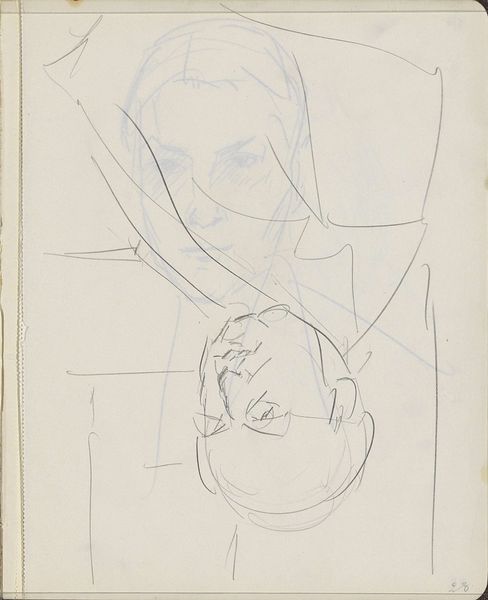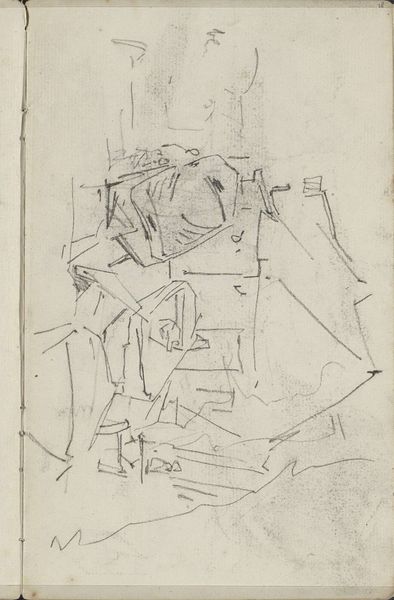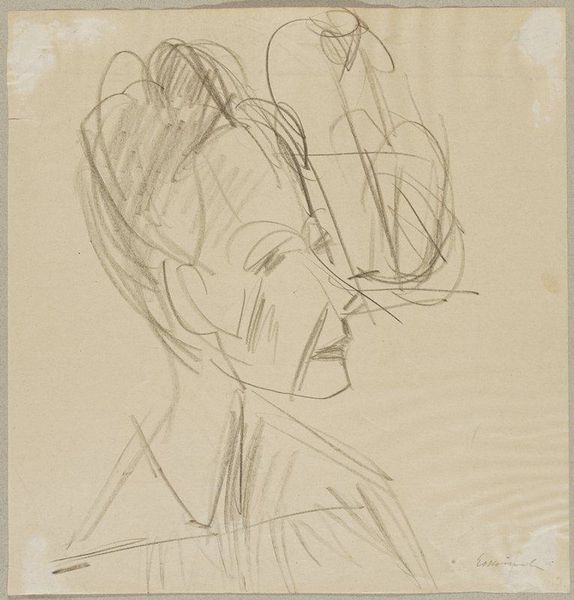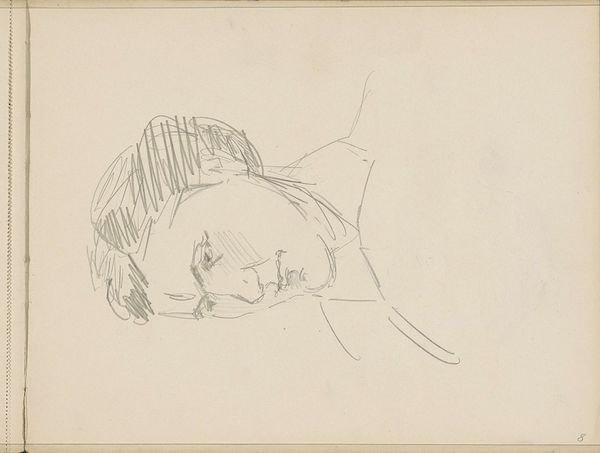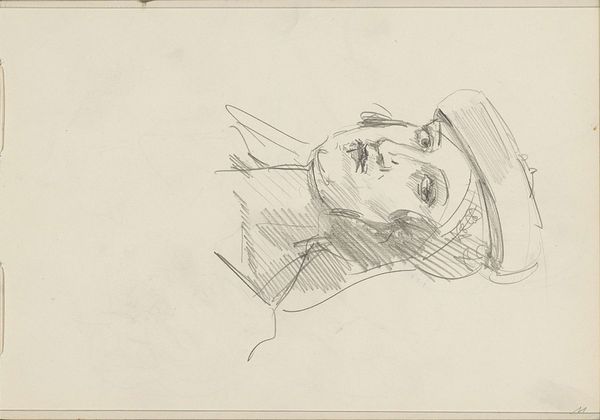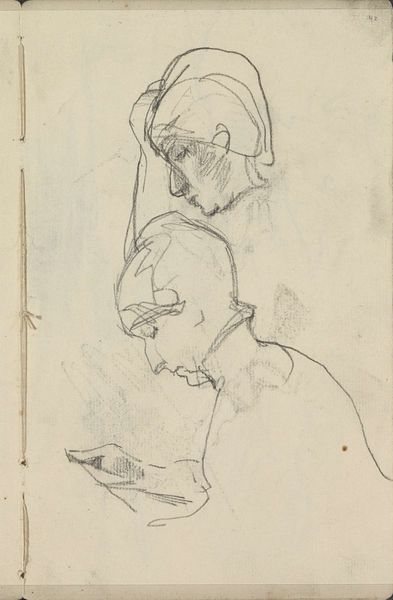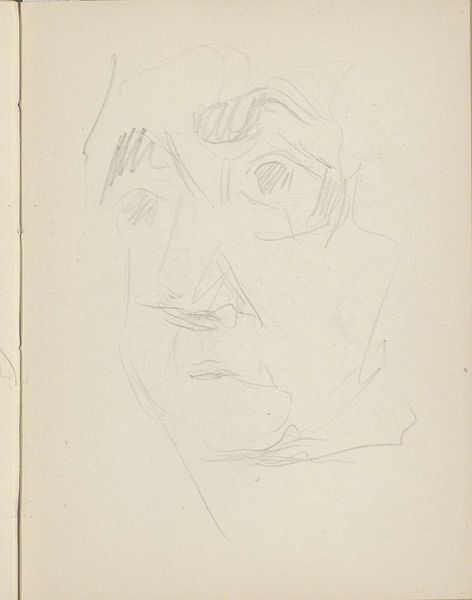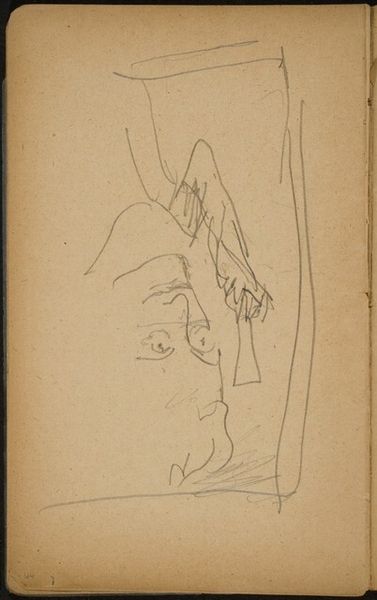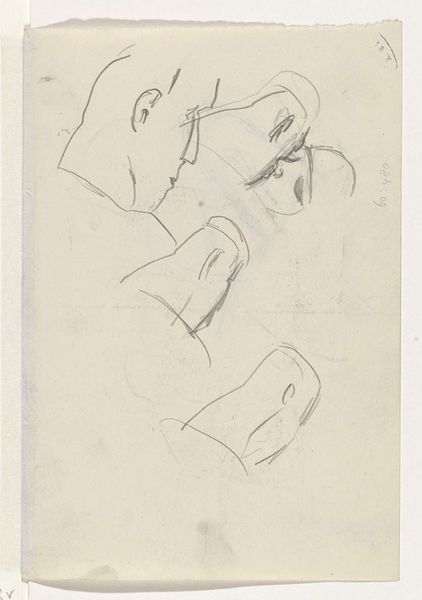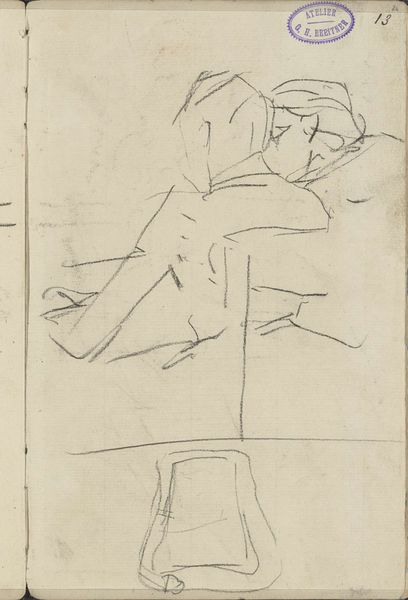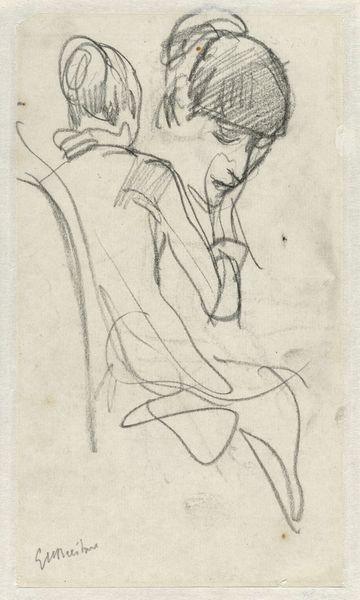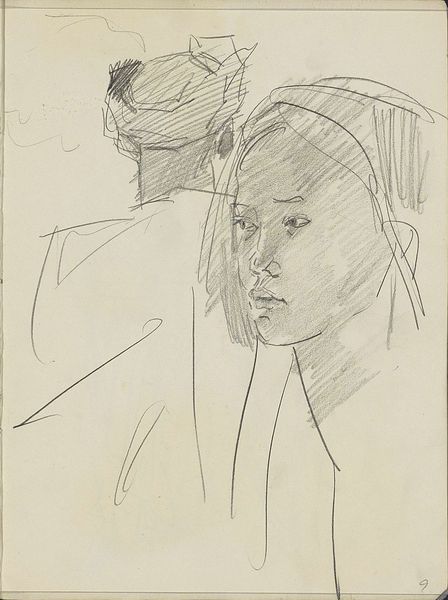
drawing, pencil
#
portrait
#
drawing
#
bird
#
figuration
#
pencil
Copyright: Rijks Museum: Open Domain
Curator: Today we're looking at "Head of a Man and a Bird with a Long Beak," a pencil drawing created around 1895 by Carel Adolph Lion Cachet, held here at the Rijksmuseum. Editor: It’s a striking image, although seemingly unfinished. There's a real sense of introspection and melancholy emanating from the man’s downward gaze and the somewhat awkwardly rendered bird hovering behind him. Curator: Note Cachet’s skillful use of line. The varying thickness and pressure applied to the pencil create depth and texture, despite the limited shading. Consider how the solid lines of the man contrast against the bird and sun behind him which are rather lightly sketched, almost spectral. Editor: That “spectral” quality feels incredibly pertinent to its time. Given the socio-political climate of the late 19th century and burgeoning psychological studies, could the bird be interpreted as representing a fragment of the man's subconscious, an attempt to grapple with burgeoning internal conflicts? The Dutch colonies, their treatment of colonized people—could that not haunt one's thoughts? Curator: An interesting hypothesis. Zooming in closer, we can examine how the lines around the mouth and eyes of the figure are rendered, suggesting a world-weariness, the almost imperceptible asymmetry contributing to a sense of individuality. It’s not a formally idealized portrait. Editor: Exactly, there’s an everyman quality here. I find it compelling to consider this in light of art and politics in the 1890's. The spectre of colonialism hangs heavily. Is this perhaps a confrontation between the individual and a sense of impending moral reckoning for the Netherlands? Curator: While your interpretation injects a modern perspective, I'd offer caution toward an overtly biographical approach without further corroborating evidence specific to Cachet’s involvement or thoughts on Dutch colonial actions. Nevertheless, it underscores the rich interpretive possibilities embedded in such deceptively simple compositional features. Editor: Fair point, perhaps that is indeed something that can only be speculated upon from this distance. Whatever its particular inspiration, Cachet has presented an introspective tension that undoubtedly reflects our contemporary dialogues surrounding positionality and personal accountability. Curator: Indeed. A beautiful demonstration of formal economy yielding complex emotional depth.
Comments
No comments
Be the first to comment and join the conversation on the ultimate creative platform.
